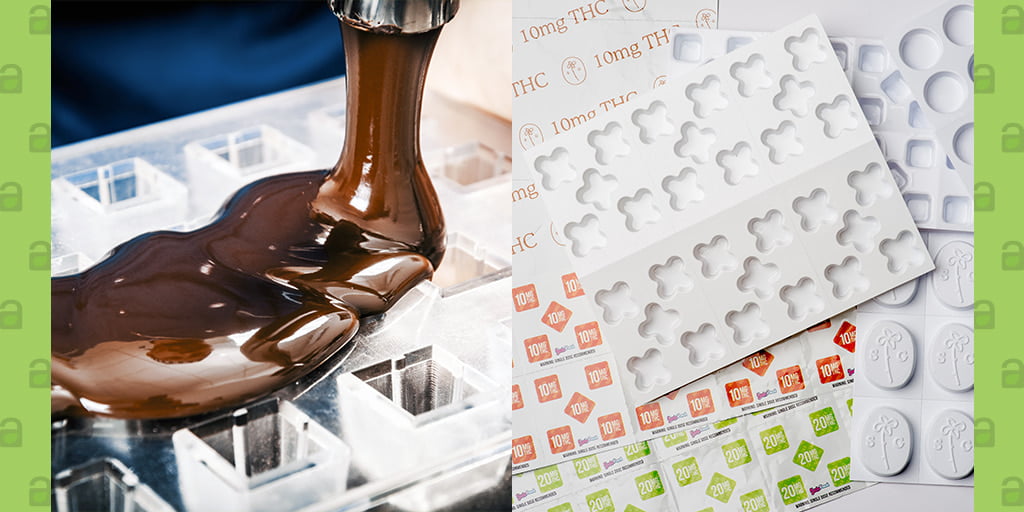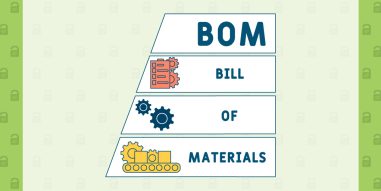3 Steps to Innovative Packaging: Stretch, Step & Leap
May 2, 2021
New problems demand new solutions — and the rapid pace of cannabis legalization is creating new problems at an exciting rate.
In the world of packaging technologies, cannabis presents novel challenges because of its diverse product formats. Smokable cannabis flowers, for example, have different properties than gummies, which are very different from concentrate oils or tinctures.
Fortunately, experienced package engineers are bringing their pharmaceutical experience to bear on the industry’s challenges and developing not only packages but methods of innovation too.
Calculating Innovation
Guido Schmitz, the former Director of Packaging & Technology at Bayer Consumer Products and a current instructor at Rutgers University Package Engineering Department, is applying a methodical framework to inspire the cannabis packaging of tomorrow. His consulting company, InnCreReal LLC, works with product manufacturers to lower their costs and environmental impacts while spurring innovation.
“Innovation is a pipeline of ideas,” says Schmitz. “Most companies aren’t ready for big leaps in their packaging.”
Instead, Schmitz says companies should consider an incremental approach that makes simple, high-leverage changes first and plans for greater innovation in the future.
Choosing the correct packaging for a particular product, for instance, might be a more sensible option than a revolutionary package design attempted too soon. Likewise, reducing packaging weight could benefit the environment and the bottom line more than a hastily implemented new material.
Schmitz explains that the packaging industry should devise those revolutionary changes — new materials, new package formats — but big changes are rarely possible in the timeframe stakeholders expect.
Changing Conventional Thinking
Instead of immediate, revolutionary design changes, companies need a pipeline of innovative ideas to make compounding improvements over years. To drive real-world innovations — such as bioplastics — Schmitz has devised a three-fold approach to innovation which he calls Step, Stretch & Leap.
“The world is exponential. Our thinking is linear,” says Schmitz. Because humans are linear thinkers by nature, designers tend to envision revolutionary changes based on an A + B = C formula.
The technique of Step, Stretch & Leap seeks a roadmap of innovation that takes a longer view.
Instead, smaller changes can stack together for compound returns. Per Schmitz’s three-fold method, a “Step” taken today can prepare the industry for a “Stretch” a few years from now, which may enable a “Leap” to a new paradigm in ten years.
What is Step, Stretch & Leap?
A “Step” is a design adjustment based on existing technology. An example of a Step might be reducing packaging weight. Reducing the amount of material needed for the primary package can save transport costs while helping the environment. Simply changing how primary packaging nests inside the shipping box can create similar savings.
Another example of a Step is AssurPack’s direct-pour blister pack. With the direct-pour AssurCard®, cannabis chocolates and gummies can be formed directly in the package to enhance production speed. It’s not a new technology, per se, but implementing the AssurCard® system eliminates a production task.
A “Stretch” is often a new package design. A Stretch innovation — which Schmitz defines as an intermediate change that takes two to four years of development — might entail using dual packaging. A dual packaging design would utilize a compostable material for the structural portion of a package with an inner liner to protect the product from the elements.
In a “Leap” of innovation, an entirely new material might be created or a new recycling technology. Innovations such as a water-soluble plastic would require extensive research and development. Schmitz characterizes Leaps as requiring upward of ten years to complete.
A Leap could be considered a design intention. While the intermediate Steps and Stretches leading up to a Leap may not be clearly defined at the outset, by holding the intention of leaping forward, designers can set a course for paradigm change.
Sustainable Packaging for a Better Future
Ultimately, the most important Leaps in packaging technology are environmental. Traditional packaging, which is often single-use plastic, worries package engineers like Schmitz.
“Before I start a package design, I want to know the end — what happens to the package after it’s used,” says Schmitz. “We must work towards what’s called ‘circular economy’.”
Circular economy, as Schmitz explains, is the concept of indefinite reuse of resources. Rather than a linear process of accessing natural resources, exploiting them, and discarding them as waste, circular economy closes the loop.
In a perfectly circular economy, biological resources would return to the environment as nutrients (from where they could be reused, if necessary). And technical resources — like metals and plastics — would be disassembled and recycled.
Remanufacturing and reusing packaging are more advantageous strategies than recycling. The reuse of a package by the consumer offers the greatest environmental benefits because it maintains utility while keeping resources out of landfills.
Like reuse, remanufacturing preserves resources without much processing. Rather than recycling a beverage bottle, remanufacturing would call for cleaning it, sanitizing it, and refilling it.
Innovation for a New Generation
In Schmitz’s work as an instructor, he’s fostering an innovative mindset in a new generation of package engineers — along with the help of AssurPack CEO, Nancy Warner. Under Schmitz’s instruction, senior-year packaging majors undertake a semester-long project where they apply the Stretch, Step & Leap method to solve real-world problems.
Though not all the senior projects are cannabis-focused, a recent group chose to explore the future of cannabis package design. Warner served as a consultant for the child-resistant design aspects of their project.
In their futuristic conception of a “Leap,” the students sought to standardize medical marijuana dosing with intelligent packaging that weighed the remaining contents of the product. The package would report the consumption rate to a doctor via a smartphone app, and arrange for refills as needed.
The design is a lofty conception of cannabis dosing, which is often an inexact science. Though it may not prove to be a feasible design, the student’s intention exemplifies planning for the future, a hallmark of Schmitz’s approach.
“Innovation is a process, a mission,” says Schmitz. “It’s the creativity of putting multiple areas together to help customers.”
The cannabis industry is doing just that — bring together multiple areas of commerce and knowledge together to revolutionize the culture of recreational and pharmaceutical drugs.
And as the industry discovers new needs for consumer safety and convenience, it seems a new generation of packaging professionals will be there to fill them.




